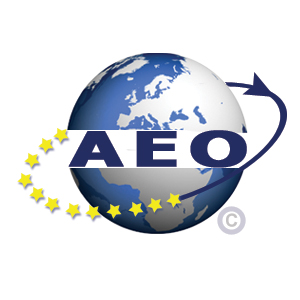11/03/2013
Since the terrorist attacks of September 11, 2001, security is high on the international agenda. For the European Union, it formed the signal to create the AEO-certificate. Companies within the supply chain who fulfil certain criteria are considered reliable with regards to customs transactions.
The AEO-status (Authorized Economic Operator) is awarded to companies who have a suitable status of service, fulfil certain criteria for control systems and financial solvency and – in some cases – meet specific security standards. An AEO-certified company is considered reliable throughout the EU and as a result is eligible for diverse benefits.
1. AEO certificate – customs simplification (certificate D):
For economic operators who want to be eligible for simplification according to customs legislation. 
2. AEO certificate – security (certificate S):
For commercial operators who want to be eligible for facilities at customs checks concerning the security on the entry of goods in the Community’s customs area or on products leaving this custom area.
3. AEO certificate – customs simplification/security (certificate F):
For economic operators who want to be eligible for the simplifications of Certificate D and the facilities of Certificate S.
Betafence has the F certificate. Certification number of Betafence: BEAEOF0000061GDG
The Authorised Economic Operator certification offers the advantage to Customs that they can orient their controls towards goods consignments of companies that are non-certified and by doing so are able to function more efficiently.
The certified companies, on the other hand, can also benefit from certain advantages. These advantages are included in de European legislation. The AEO status of a company is recognised in all EU-member states and an AEO can use these advantages in every member state.
Next to these "legal" advantages, additional advantages are created when obtaining the status. Below you'll find a survey of all advantages of the AEO-status:
The holder of an AEO-customs certificate:
The holder of an AEO-safety certificate:
Since Betafence is the holder of an AEO-customs and safety certificate, it obtains all these legal advantages.
For clients and suppliers, the AEO is, just like the ISO, prove that certain processes in the organisation are regulated well. Thus, for example, an AEO must be financially healthy, may not have committed fraud and keep a transparent goods administration. All these matters indicate that an AEO is a reliable partner. By the way, Maco confirms from its own experience that certain parties demand that their partners have the AEO certification.
Since also forwarding agents and carriers want to benefit from the AEO status, there is a possibility to separate consignments in certified and non-certified. One would wish to have the goods in a certified load, because it will be handled sooner. The negotiating position would also be better, as an AEO has proved to be reliable and safe. This will, for example, make it possible to obtain longer terms of payment, or lower insurance premiums. Thus the AEO status can produce financial advantages and a faster logistic handling.
To optimally secure the international supply chains, cooperation with third (non-EU) countries is required. Therefore one strives for mutual recognition of the AEO status between all countries that are executing an AEO or similar program. So the EU-US Joint Customs Cooperation Committee (JCCC) is at the moment working on the mutual recognition of the AEO and the C-TPAT status, but there are also initiatives with other countries, such as China, Canada and Australia.
The WCO (World Customs Organisation) is at the moment developing one unanimous customs safety program for all 166 connected countries; the Framework of Standards to Secure and Facilitate Global Trade. Meanwhile, over 70 countries have promised to implement the Framework.
All this means that shortly an AEO certified company could also in other countries profit by customs easing and simplifications.
To become AEO a company must meet a lot and high requirements. These requirements are intended to control the risks of terrorism, but the improvements that are made in connection herewith often also yield efficiency profits. Some examples:
The largest advantage for AEO-companies is to have lesser disadvantages! Then customs will, after all, more rigorously control consignments of companies that are non-certified.
Source: www.macocustoms.com